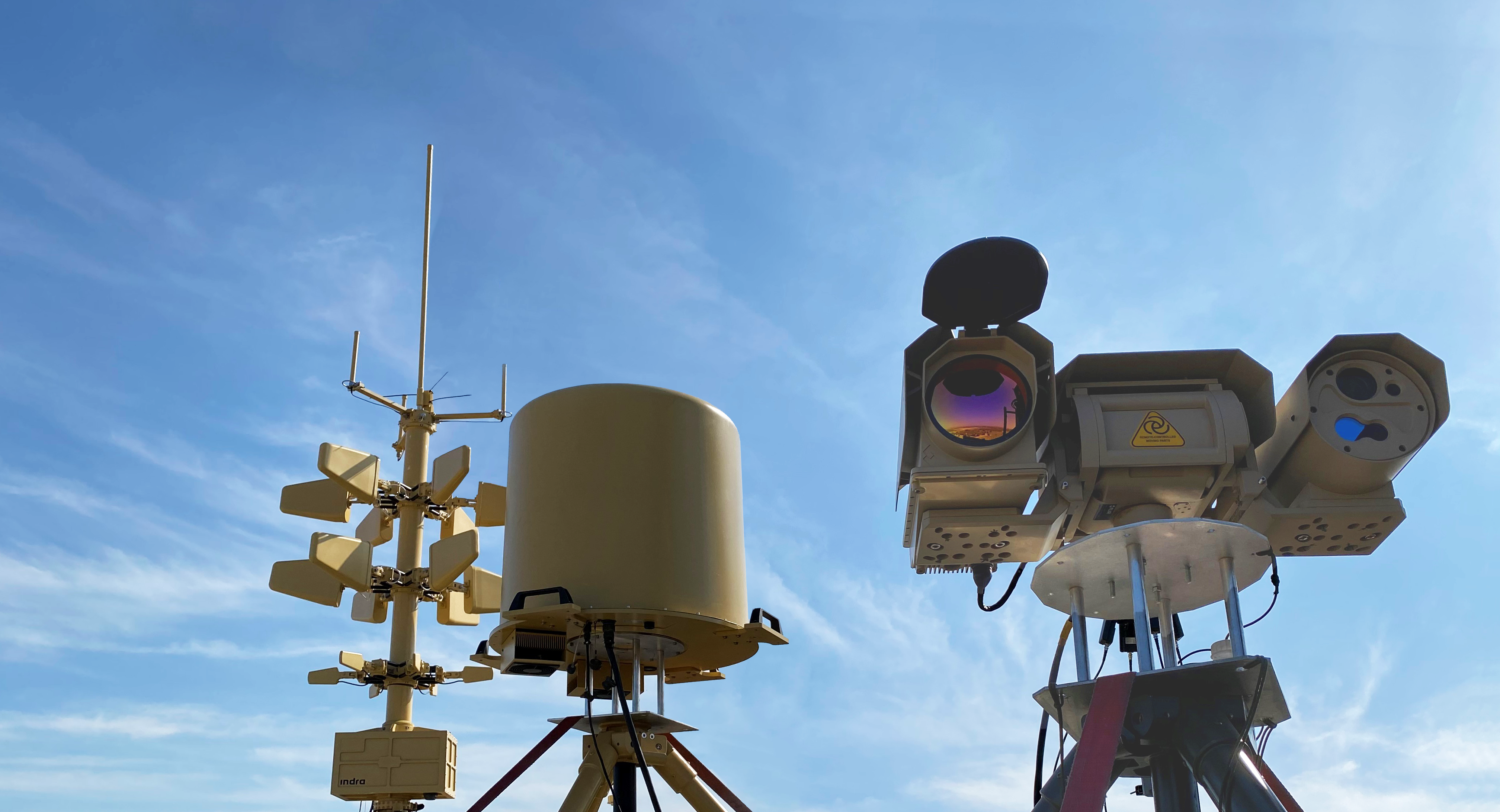
Indra’s anti-drone system, key to security of the Air Force One and 100 other aircrafts at the NATO summit
The recent NATO Summit turned Madrid into one of the best-protected cities on the planet. We now know that the Air and Space Force relied on a state-of-the-art Indra system to protect the landings of the Heads of State and Government on their arrival at Torrejón de Ardoz air base.
The Air and Space Force Deployment Support Squadron (EADA) was tasked with performing this delicate mission with the aid of Indra’s ARMS system, a latest generation solution capable of detecting small drones several kilometers away and neutralizing them.
This was the secret weapon that the unit relied on to ensure the security of US President Joe Biden’s Air Force One and 100 other aircraft carrying almost 30 delegations.
Against the backdrop of the war in Ukraine, the level of security had to be tightened and the ARMS system was integrated into a powerful defence deployment that included the use of anti-aircraft artillery and F18 and Eurofighter aircraft.
Indra’s system controlled one of the critical points in this deployment, namely the moment at which the aircraft approached the runways, when they were more vulnerable due to flying low and at a lower speed. It was also responsible for shielding the entire perimeter of the airbase, which covers 45 hectares, an area equivalent to about 90 soccer fields.
According to the head of the air base, Brigadier General Alfonso Reyes, the difficulty lay in “the large number of delegations received within such a short space of time”. The ARMS system is designed to neutralize small drones that are difficult for conventional radars and weapons systems to detect.
These unmanned aircraft can lift off very close to their target, leaving very little time to react, or attack simultaneously from different points, on occasions forming veritable swarms to attempt to overcome defence systems.
The ARMS system is therefore designed to respond in a highly automated and rapid manner, launching a targeted response to take down a single target or neutralize massive attacks if necessary.
The solution gathers intelligence to identify the type of drone that is in the air and chooses the most effective response in each case. The operator supervises the entire operation from the command and control station and launches the necessary countermeasure to block the device’s navigation and control systems, bringing it down or forcing it to land.

Miguel Acitores, Indra’s security business director, underlined that the Spanish Air Force “has confirmed the high operational performance of the system during its latest international missions”.
One of them was the European mission in Mali, where Indra’s system protected the Koulikoro base and contributed to reinforcing the security of the Spanish detachment.
Indra has been a pioneer in the development of these systems and it has delivered its solution to the armies of different countries, which are currently operating with it. The benefits include its ability to adapt to all kinds of settings and offer protection in conflict zones, civilian areas and airports, where the countermeasures to be used must be much more accurate and almost surgical to minimize any interference with the electronic systems of the aircraft and control tower.
The deployment carried out by Indra at the Torrejón Air Base included Spanish technology provided by Indra and ART and the support of CERBAIR’s sensors.
As the presence and use of drones increase, advanced protection systems such as ARMS are acquiring greater importance.
Receiving the support of a technological leader with a profound understanding of the evolution of threats is essential to stay one step ahead.
Add new comment